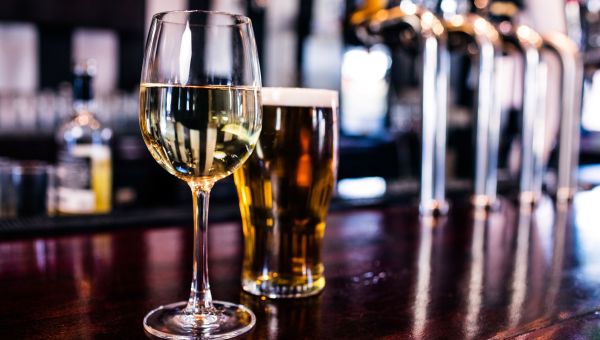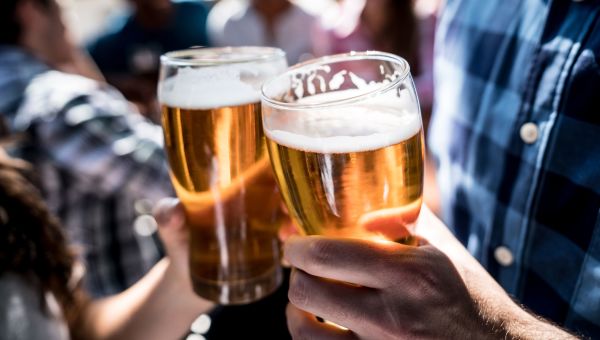Alcohol causes 1 in 20 deaths worldwide—plus 5 other vital facts
Harmful alcohol use is responsible for more than 3 million global deaths a year, according to a new World Health Organization report.

More than 2 billion people worldwide consume alcohol, including beer, wine and distilled spirits, according to estimates from the World Health Organization (WHO). Of current drinkers, an estimated 237 million men and 46 million women suffer from alcohol use disorder, which involves compulsive drinking and an inability to control alcohol use.
Excessive alcohol use can cause more than a nasty hangover. It can increase the risk of injury and suicide. Consumption can also up the likelihood of a poor work and school performance, risky behaviors, like unprotected sex, heart and liver disease, cancer and dementia. Harmful consumption can even be deadly.
Before you pick up your next cocktail, read on for six essentials facts about alcohol consumption and abuse.

Alcohol abuse is deadlier than you might think
Alcohol is responsible for 1 in 20 deaths globally—that's more than 3 million lives each year—according to the WHO's latest global status report. Men make up more than 75 percent of those deaths, about 2.3 million. Overall, alcohol abuse contributes to more than 5 percent of global disease burden.
According to the report released in September 2018, about 28 percent of alcohol-related deaths were the result of injuries sustained in incidents like car crashes and physical violence. Digestive disorders and heart diseases are other leading causes of alcohol-related deaths, followed by infectious diseases, cancer and mental health disorders.
On average, those who drink consume the equivalent of two 5-ounce glasses of wine, two 12-ounce bottles of beer or two 1.5-ounce shots of liquor, like whisky, vodka or tequila, a day. These are double the amount of what's considered a standard drink in the United States.

The threshold for problem drinking is lower than you thought
Think you need to be stumbling drunk to have a drinking problem? Maybe not, says the Substance Abuse and Mental Health Services Administration. The administration defines heavy drinking as five or more drinks in a sitting on at least five of the last 30 days. Binge drinking is the consumption of five or more drinks in the same session, according to the group.
The NIAAA defines binge drinking as consuming enough to push your blood alcohol level to 0.08 grams per deciliter (g/dL). That’s about four drinks for women or five for men within a two-hour time span.

Too much alcohol makes your RealAge older
According to the Centers for Disease Control and Prevention, excessive alcohol use was responsible for about 88,000 US deaths annually between 2006 and 2010. Excessive drinking (in this case, six or more drinks per day) can add 2.6 years to your RealAge if you’re a man and 7.4 years if you’re a woman.
Long-term risks of excessive drinking include heart disease, certain cancers, depression and damage to your brain.

Genetics may play a role
Some people can have a drink or two and stop. For others, one drink quickly turns into six or seven. Here’s the truth: it’s partially genetic. Children of alcoholics are four times more likely to become alcoholics than people whose parents don’t have alcohol problems.
Genetics aren't entirely to blame—more than half of all children of alcoholics do not become alcoholics themselves.

Excessive alcohol may make you less fertile
Too much alcohol may hurt your chances of having children, whether you’re a man or a woman. Drinking too much can degrade a man’s sperm, making it more difficult to get a partner pregnant. In a Danish study of more than 1,200 men, those who drank more than 40 drinks per week had a 33 percent lower sperm count than men who drank fewer than five drinks per week. The study suggests even five or more weekly cocktails had a negative effect on sperm counts.
In another Danish study, women who drank 14 or more servings of alcohol per week were nearly 20 percent less likely to get pregnant than women who drank none.

Alcohol abuse is undertreated
About 15 million US adults have alcohol use disorder, according to the National Institute on Alcohol Abuse and Alcoholism (NIAAA). A 2015 study published in The Journal of the American Medical Association Psychiatry suggests only 20 percent of people who have experienced an alcohol use disorder sought treatment.
Options are available, however. Outpatient treatments, like group counselling, family therapy, individual sessions and prescription medication that reduce cravings, could be good options for those who are able to recover while still working, engaging with their loved ones and living at home. Consider joining an Alcoholics Anonymous meeting. Find meeting locations near you on their website. Inpatient rehabilitation, either in a hospital or treatment facility, is also available.
If you or someone you know has alcohol use disorder, the first step is to make an appointment with a primary care physician who can assess drinking patterns, create an action plan and refer you to treatment programs.
